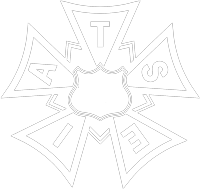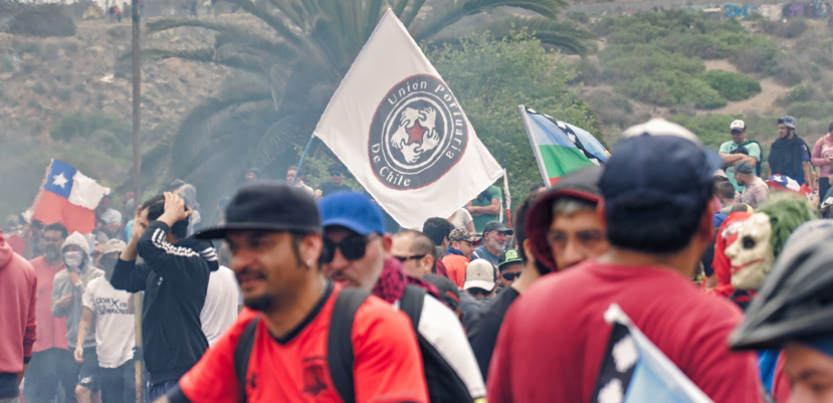In October, Chilean President Sebastián Piñera, an entrepreneur and right-wing politician, proclaimed that “in the midst of this turbulent Latin America, our country is a true oasis.”
Six days later, high school students in the capital city, Santiago, began a protest against the rising cost of public transit through mass fare evasions.
By the end of the week, the protest had turned into a seemingly unstoppable revolt. Piñera himself repeated on television the phrase with which the dictator Augusto Pinochet had unleashed the military annihilation of the Chilean left and labor movement between 1973 and 1989: “We are at war.”
Metro stations had begun to burn on Friday, October 18. I was on the street that day and participated in one of the many simultaneous clashes with the police, just steps from my house, in front of the National Library. The men and women who threw stones at the armored vehicles included both office workers in blazers and informal workers in windbreakers.
HARSH INEQUALITY
Currently, 70 percent of Chilean workers make less than $700 (U.S.) per month. The median pension is $70 per month for men and less than $26 for women. The average household in Chile has total debts equivalent to 70 percent of their yearly income, making it very hard to get out of debt.
This impoverishment is rooted in anti-worker policies established during the 1973-1989 dictatorship and administered by subsequent democratic governments. These policies even include Chile’s constitution, which was rewritten during the Pinochet era and has remained in place ever since. Chile has rightly been characterized as the world’s first laboratory of neoliberalism, the free-market ideology of cutting regulations, slashing public services, and privatizing everything.
Among the most significant of these policies from the worker perspective are the decimation of collective bargaining, the subsidization of private enterprises at the expense of basic public services, and the forced privatization of pension funds, profitable to a handful of private insurers. The result has been brutal inequality, in which 1 percent of the population has accumulated more than a quarter of the country’s wealth. The slogan of the revolt quickly became—referring to the subway fare hike—“It’s not about 30 pesos; it’s about 30 years.”
These intolerable conditions made it easier for student fare evasion to lead to a widespread working-class revolt, which extended from the capital city to the rest of the country in a matter of hours. But the protests haven’t simply been about economic inequality, but also about long-standing questions of social justice and the legitimacy of the government in the post-Pinochet era.
THE ROLE OF THE UNIONS
Although it was a working-class protest, this revolt was neither prepared nor led by the unions. On the contrary: it was spontaneous and structureless.
Two general factors help explain this. The first is that most workers have no union. In Chile, more than 40 percent of jobs are not covered under any labor legislation and in 85 percent of businesses there does not exist even a single union. Collective bargaining agreements cover just 20 percent of workers.
The second is the discrediting of the main union federation, the Central Unitaria de Trabajadores (CUT, the United Workers Center). This owes to its role during the most recent labor reform, in 2015, when CUT leaders acted in complicity with the government against workers' interests. These same leaders have been accused of violating electoral procedures to remain in leadership.
However, the CUT regained part of its critical role with the change of government in 2018, forming—together with other activist organizations, including feminists, environmentalists, and students—an organization to convene protests around various demands, called ‘
Unidad Social’ (US, Social Unity). Leaders of different political tendencies coexist inside this organization, from the Communist Party to the Christian Democrats to “anti-party” groups. That slowed their collective reaction when the current revolt began.
Nevertheless, on the margins of the Unidad Social, the dockworkers—the most combative sector of the Chilean working class— from day one began to talk of a “general strike”—a term not used in Chile for many years. That same weekend the longshore workers began to halt work to protest the repression and announced a national strike on October 21.
This created enough pressure to force the coalition to begin to mobilize. After a week, the longshore workers, together with Unidad Social, called a general strike, defining as its goal a direct vote on replacing the constitution with a new one to be drafted by a people's assembly, in addition to an immediate “Emergency Plan,” which demanded that the government and the political parties:
- halt the legislative agenda of the government
- raise the minimum salary to $670 (U.S.) a month
- raise the basic pension to the same figure and move toward a social security system that provides true social security, abolishing the current system
- establish collective bargaining by sector and a true right to strike
- protect social rights and freeze the prices of basic services (light, water, gas, public transportation, medicine)
- indict and punish those responsible for violating human rights
After the strike and the lack of response from the Piñera administration, a “committee” was formed of the most representative union organizations in the country, bringing together the CUT, dockworkers, miners, construction workers, teachers, and public employees, and the Coordinadora No+AFP—a coalition of unions and other groups that has been campaigning for years against the privatized pension system. They declared: “We put forward as our strategic goal the writing of a new constitution that will establish the political and economic basis for the social rights that were taken away during the dictatorship and which for 30 years no government has had the will to recover.”
CAN’T STOP US NOW
The committee called a general strike for November 12. Two days before, President Piñera had pledged that the constitution would be rewritten, although in a process controlled by Congress, rather than the constitutional assembly demanded by demonstrators.
Meanwhile, despite the evident discontent on a wide range of issues, on October 19, the president opted to simply reverse the increase in transportation fares ($0.04 over the current $1.10). At the same time he decreed a State of Emergency and a military curfew, and restricted citizen rights such as assembly and transit. By the time the decree was lifted, after a week of popular outcry, more than 1,000 protesters had been wounded—nearly half by firearms—and three times as many had been detained. More than 100 lawsuits have been filed, including allegations that state authorities committed murder and rape against protesters.
A peaceful march of 1.2 million people on October 25—the largest in the country’s history—demonstrated that the government’s proposed reforms in terms of wages and pensions had been wholly insufficient to appease the movement. The marchers strongly condemned the injuries and loss of life as well. As a result, the government was forced to lift the state of emergency.
But the police violence has intensified. The best indicator is the quantity of serious eye injuries caused by short-distance shots to the face. According to the doctors’ association, there have been around 200 such incidents within the last two weeks. (For reference, the Israel-Palestine conflict registered around 150 injuries of this type in a period of six years.) Given these figures, the Faculty of Medicine at the University of Chile has accused the state of using mutilation as a tool of public control.
In short, rather than calming down, the movement has only gained momentum, rebutting the fragile fiction that it is possible to return to the Chile of prior to the revolt.

